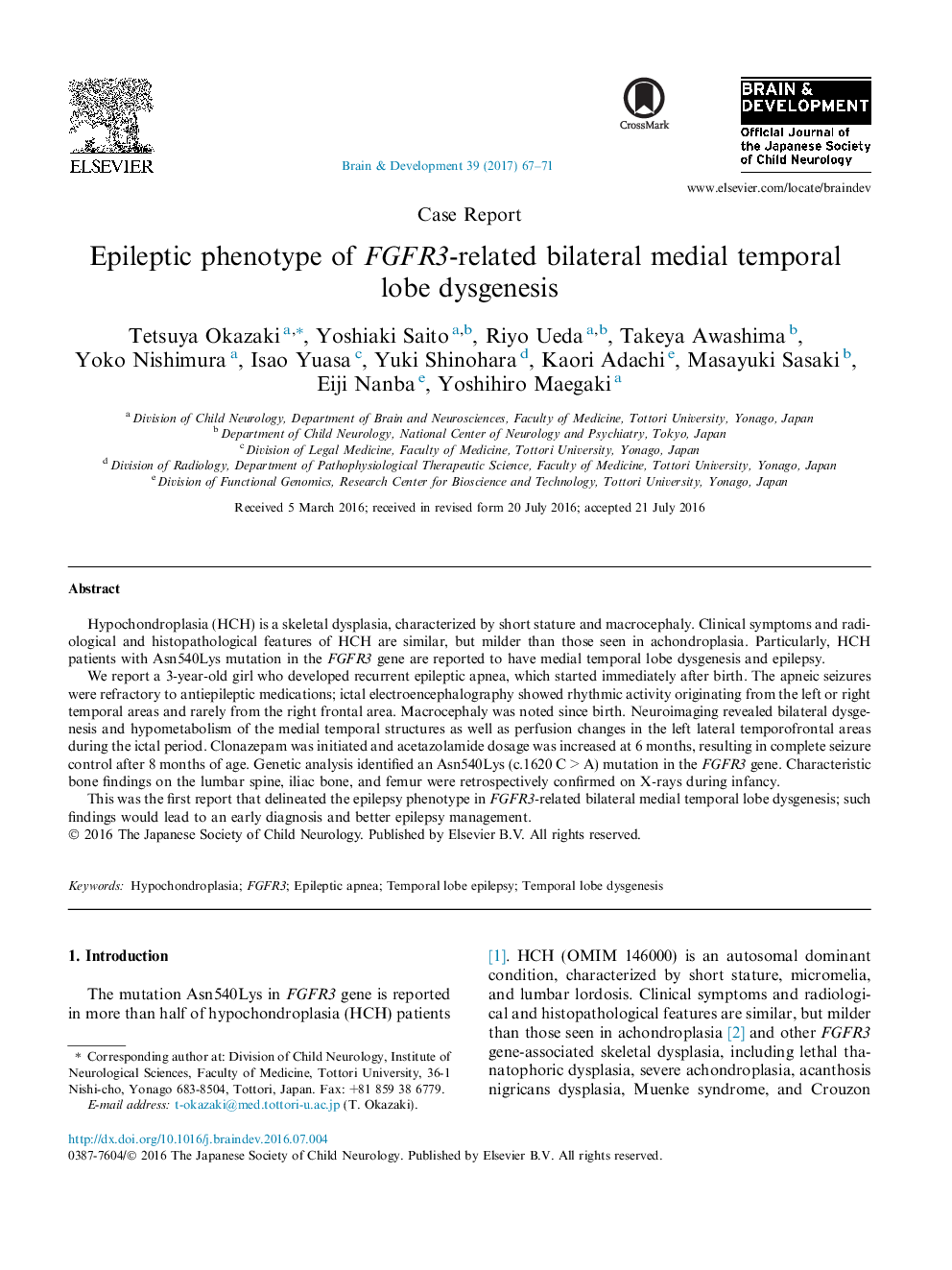| کد مقاله | کد نشریه | سال انتشار | مقاله انگلیسی | نسخه تمام متن |
|---|---|---|---|---|
| 5626449 | 1406321 | 2017 | 5 صفحه PDF | دانلود رایگان |

Hypochondroplasia (HCH) is a skeletal dysplasia, characterized by short stature and macrocephaly. Clinical symptoms and radiological and histopathological features of HCH are similar, but milder than those seen in achondroplasia. Particularly, HCH patients with Asn540Lys mutation in the FGFR3 gene are reported to have medial temporal lobe dysgenesis and epilepsy.We report a 3-year-old girl who developed recurrent epileptic apnea, which started immediately after birth. The apneic seizures were refractory to antiepileptic medications; ictal electroencephalography showed rhythmic activity originating from the left or right temporal areas and rarely from the right frontal area. Macrocephaly was noted since birth. Neuroimaging revealed bilateral dysgenesis and hypometabolism of the medial temporal structures as well as perfusion changes in the left lateral temporofrontal areas during the ictal period. Clonazepam was initiated and acetazolamide dosage was increased at 6Â months, resulting in complete seizure control after 8Â months of age. Genetic analysis identified an Asn540Lys (c.1620 CÂ >Â A) mutation in the FGFR3 gene. Characteristic bone findings on the lumbar spine, iliac bone, and femur were retrospectively confirmed on X-rays during infancy.This was the first report that delineated the epilepsy phenotype in FGFR3-related bilateral medial temporal lobe dysgenesis; such findings would lead to an early diagnosis and better epilepsy management.
Journal: Brain and Development - Volume 39, Issue 1, January 2017, Pages 67-71